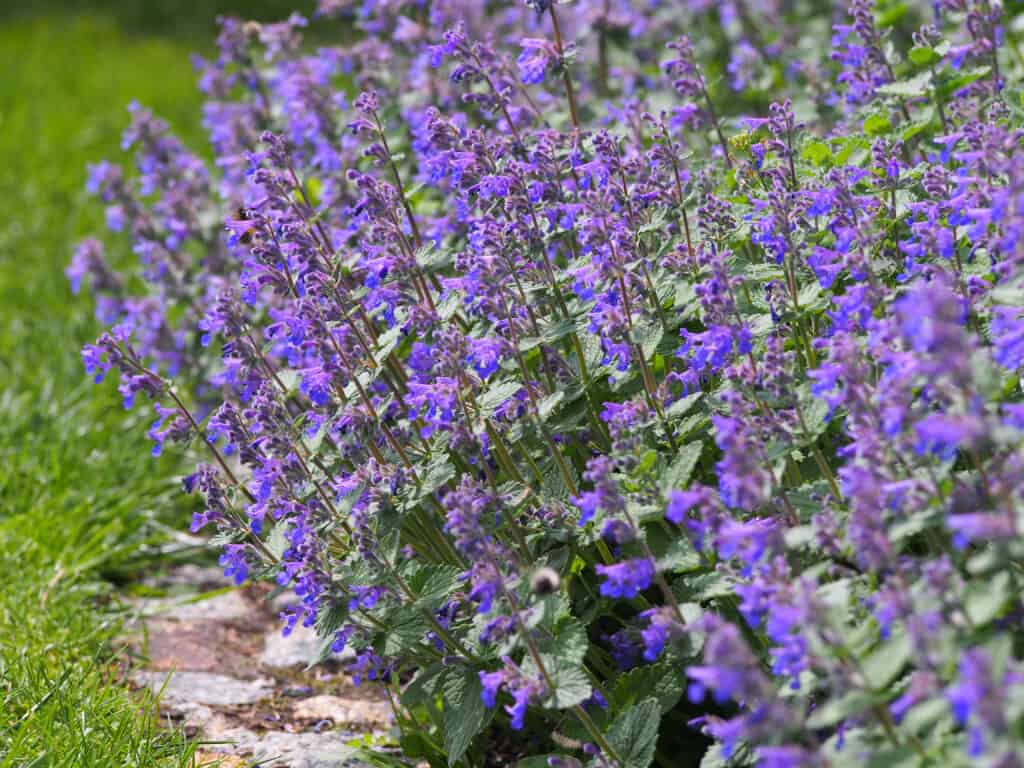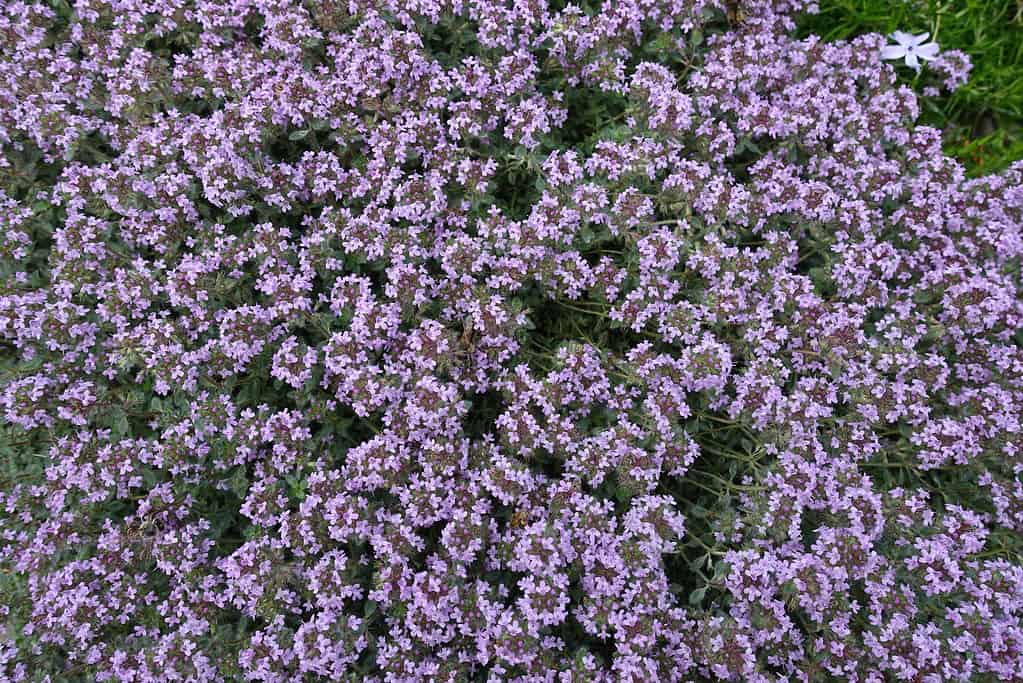16 Plants That Look Like Lavender And How to Care For Each
3. Catmint (Nepeta spp.)

©Anna Gratys/Shutterstock.com
Catmint is an herbaceous plant known for its striking resemblance to lavender, particularly in terms of its foliage. Its leaves are gray-green, aromatic, and have a soft, silvery quality that closely mirrors the appearance of lavender leaves. The plant typically grows in a mounding form, producing tiny, tubular flowers in shades of blue, purple, or pink that also bear a resemblance to lavender blossoms.
While catmint may not mimic lavender’s signature fragrance, it offers its unique minty scent, which is equally appealing to many garden enthusiasts. It thrives in full sun but can tolerate partial shade, although it may bloom less profusely in shadier conditions.
Well-draining soil is essential for Catmint. However, it is adaptable to a range of soil types but prefers slightly alkaline conditions. Water the catmint moderately, allowing the soil to dry out between waterings, and avoid overwatering to prevent root rot.
Additionally, regularly trim back spent flowers to encourage continuous blooming and divide mature catmint plants every few years to maintain their vigor and prevent overcrowding. This perennial is deer- and rabbit-resistant, making it a valuable addition to gardens prone to wildlife browsing.
4. Creeping Thyme (Thymus serpyllum ‘Elfin’)

©iStock.com/apugach
Elfin creeping thyme is a charming herb that, while not identical to traditional lavender, shares some of its visual characteristics and is an excellent ground cover option. Creeping thyme forms a low, dense mat of tiny, aromatic leaves that are reminiscent of lavender foliage. The leaves are small, oval-shaped, and typically have a gray-green coloration, providing a soft, silvery appearance.
Although creeping thyme is primarily cultivated for its foliage, it occasionally produces delicate, tubular flowers in shades of pink or lavender during the summer, further enhancing its charm. Elfin’s compact growth habit makes it an ideal choice for edging, rock gardens, or between stepping stones.
Plant creeping thyme in a location that receives full sun for most of the day. Well-draining soil is also crucial, but it is adaptable to various soil types. Once established, creeping thyme is drought-tolerant and prefers slightly drier conditions. Water sparingly, allowing the soil to dry out between waterings.
Trim back the plant after flowering to maintain its compact shape and encourage dense growth. Creeping thyme is generally resistant to pests and diseases, making it a low-maintenance ground cover option.









